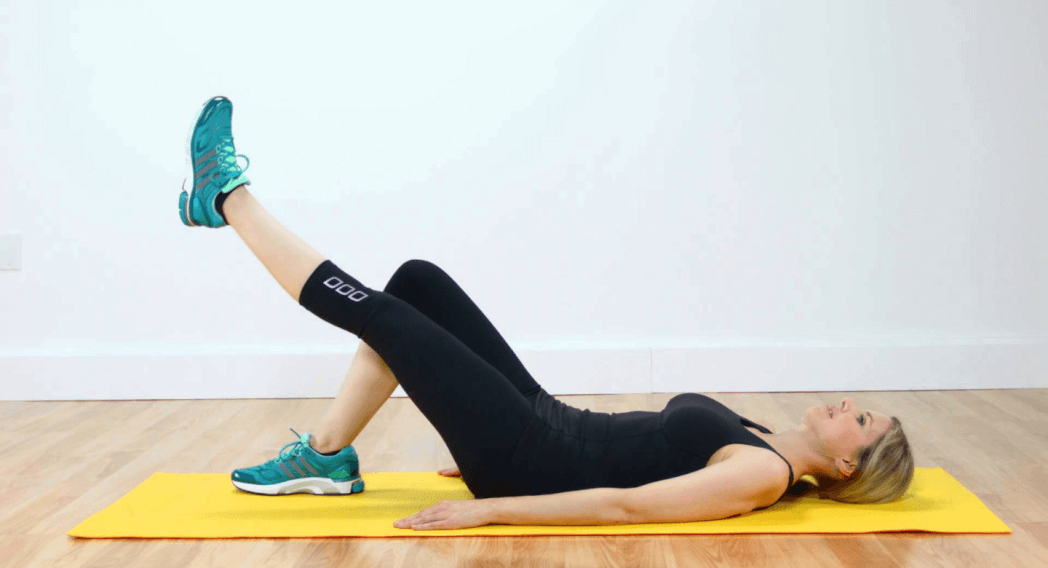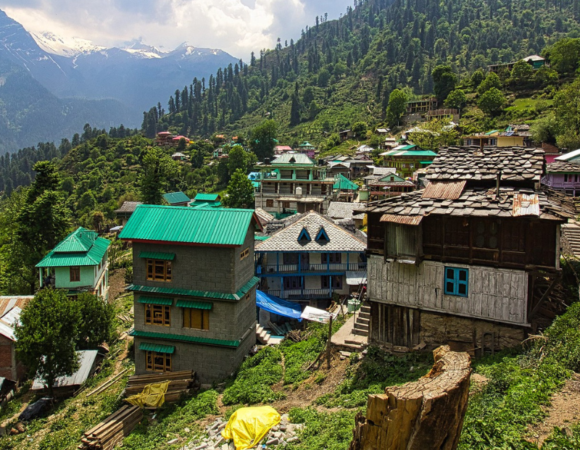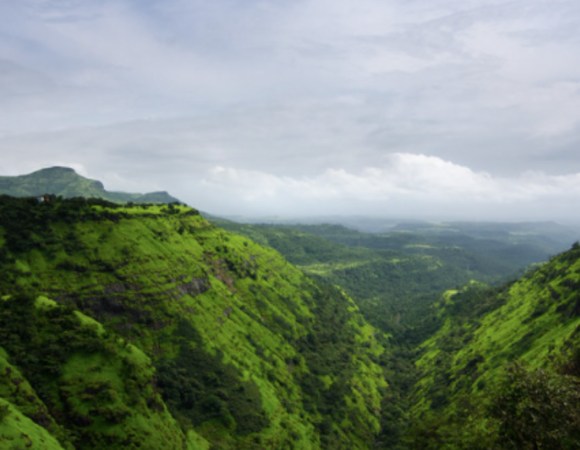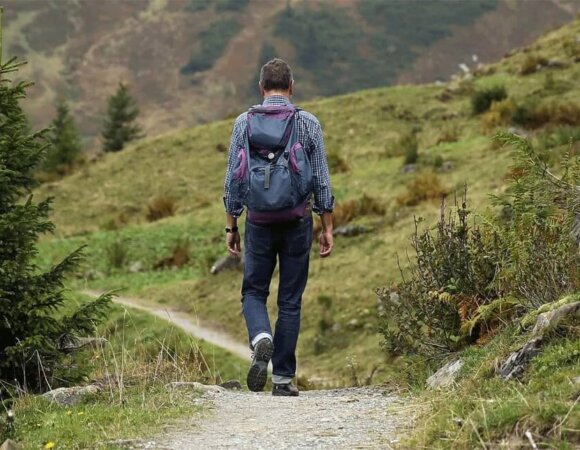5 Knee Strengthening Exercises to do Before a Trek
Table of Contents
ToggleDiscover effective knee strengthening exercises to prevent injuries and improve endurance for trekkers. Strengthen your knees for better performance on uneven terrain and long treks.
Trekking is an exhilarating outdoor activity, but it puts a lot of strain on your knees. The uneven terrain, long hours of walking, and the added weight of a backpack can test the strength and endurance of your knee joints. For trekkers, this can lead to common knee problems like pain, strain, or even serious injuries, which can cut your adventure short. Incorporating knee strengthening exercises into your routine can help improve joint stability, reduce strain, and enhance overall trekking performance.
In the following sections, we’ll walk you through the top 5 knee-strengthening exercises that will help you stay injury-free and make your treks more enjoyable.
Why Knee Strength Matters in Trekking
Knee strength is critical in trekking because the knees bear the majority of the body’s weight and are involved in almost every movement during walking or hiking. When trekking, especially over long distances or on challenging terrain, the knees are subjected to repetitive impact and stress. Performing regular knee strengthening exercises helps stabilize and protect the joints, reduce fatigue, and prevent injuries, allowing trekkers to enjoy longer and safer adventures.
Common Knee Injuries in Trekking

- Tendonitis: Inflammation of the tendons, particularly around the knee joint. Repeated activities like trekking can irritate the patellar tendon (jumper’s knee) or the iliotibial band (IT band tendonitis), leading to pain, swelling, and reduced mobility.
- Runner’s Knee (Patellofemoral Pain Syndrome): This condition is characterized by pain around the kneecap. It often occurs during downhill or uneven terrain trekking when the knee cap doesn’t align properly during movement, causing friction and pain.
- Ligament Strain (e.g., ACL injuries): Trekking on rough terrain increases the risk of twisting the knee or falling, which can cause sprains or tears in the ligaments (like the ACL). Proper knee strength and stability can help reduce the risk of such injuries.
Benefits of Strength Training for the Knees
- Injury Prevention: Strengthening the muscles around the knee, such as the quadriceps, hamstrings, and calf muscles, provides better support for the knee joint. Stronger muscles absorb some of the shock and stress from trekking, reducing the risk of strains, tendonitis, and other injuries.
- Better Balance and Stability: Strong muscles improve balance and coordination, which is vital when trekking on uneven or challenging terrain. The stronger your leg muscles are, the better you can control your movements and reduce the risk of falls or awkward landings that strain the knee.
- Increased Stamina and Endurance: Well-trained muscles in the legs, especially the quadriceps, hamstrings, and calves, improve stamina during long treks. This helps prevent fatigue, which is often a contributing factor to poor posture or awkward knee alignment that can lead to pain or injury.
5 Best Knee-Strengthening Exercises for Trekkers
These knee strengthening exercises target key muscles that support the knees and improve overall stability, endurance, and performance for trekkers. Incorporating them into your training routine will enhance knee strength and reduce the risk of injury.
1. Wall Sits
Muscles Targeted: Quadriceps, glutes

How to Perform:
- Stand with your back against a wall and your feet about shoulder-width apart.
- Slide down into a seated position, as if sitting in a chair, keeping your knees at a 90-degree angle.
- Ensure your knees are directly above your ankles and not extending past your toes.
- Hold this position for 20-60 seconds, then rise back up to standing.
- Repeat for 3-4 sets.
Form Tips:
- Keep your back pressed firmly against the wall, and avoid arching your lower back.
- Engage your core to prevent slouching and maintain balance.
Benefits:
Builds endurance in the quadriceps and glutes, which are crucial for supporting the knee during trekking.
2. Step-Ups
Muscles Targeted: Quadriceps, hamstrings, glutes

How to Perform:
- Stand in front of a sturdy bench or step.
- Step up with your right foot, pressing through the heel to fully extend your leg.
- Bring your left foot up to join your right on the step, standing tall.
- Step down with your right foot, then your left foot, returning to the starting position.
- Repeat for 10-12 reps per leg, alternating legs for 3 sets.
Proper Technique:
- Keep your knee aligned with your toes and avoid letting it extend past your toes when stepping up.
- Use a controlled motion; don’t rush.
Benefits:
Mimics the uphill trekking movement, strengthening the same muscles used during inclines.
3. Straight Leg Raises
Muscles Targeted: Quadriceps, hip flexors

How to Perform:
- Lie flat on your back with one leg extended and the other bent.
- Tighten your thigh muscles and slowly raise the extended leg about 6-8 inches off the ground.
- Hold for 2-3 seconds, then lower the leg back down with control.
- Repeat for 12-15 reps per leg for 3 sets.
Form Tips:
- Keep the leg straight and your knee locked while lifting.
- Avoid arching your lower back by engaging your core.
Benefits:
Strengthens the quadriceps without placing strain on the knee joint, making it a great exercise for beginners or those with knee pain.
4. Lunges (Forward and Reverse)
Muscles Targeted: Quads, hamstrings, glutes, calves

How to Perform:
- Stand with your feet hip-width apart, then step forward with your right leg, lowering your hips until both knees are at 90 degrees.
- The back knee should hover just above the ground.
- Press through your right heel to return to standing, then repeat on the left side.
- You can alternate between forward and reverse lunges, or complete all reps on one leg before switching.
Proper Alignment:
- Ensure your front knee does not extend past your toes.
- Keep your upper body upright with your shoulders back throughout the movement.
Benefits:
Improves balance, flexibility, and knee stability—important for managing uneven terrain during trekking.
5. Glute Bridges
Muscles Targeted: Glutes, hamstrings, lower back

How to Perform:
- Lie flat on your back with your knees bent and feet flat on the floor, hip-width apart.
- Press your heels into the floor and raise your hips toward the ceiling until your shoulders, hips, and knees form a straight line.
- Hold at the top for 2-3 seconds, then slowly lower your hips back down.
- Repeat for 12-15 reps for 3 sets.
Form Tips:
- Keep your core engaged to protect your lower back.
- Avoid overextending your back at the top; keep your movements controlled.
Benefits:
Strengthens the posterior chain (glutes, hamstrings, and lower back), which reduces the strain on the knees and enhances overall stability during trekking.
Preparing for Trekking—Guidelines for Knee Strengthening
Strengthening the knees in preparation for trekking involves consistent training to build muscle strength, stability, and endurance. By following a structured plan, you can reduce your risk of injury and improve overall performance on the trail.
When to Start Training:

Ideally, you should begin your knee strengthening exercises regimen 4 to 6 weeks before embarking on your trekking adventure. This timeline allows enough time for progressive strengthening while ensuring that your muscles are adequately conditioned. Starting earlier provides the benefit of building a solid foundation of strength, flexibility, and endurance, which can make a significant difference in your trekking experience.
- 4-6 weeks is the sweet spot, as it provides sufficient time to perform exercises, monitor progress, and make adjustments.
- If you’re newer to exercise, aim for 6 weeks to gradually build up strength.
- For experienced trekkers, 4 weeks may be enough, but consistency is key.
Frequency and Reps:
To see the best results, aim to incorporate knee-strengthening exercises 3 to 4 times per week. Consistency in training will help you build and maintain strength without overloading the muscles.
- Sets and Reps: Start with 2-3 sets of each exercise, performing 10-15 reps per set. As you progress, you can increase the number of sets or the resistance (e.g., adding weights) to continue challenging your muscles.
- Rest Days: Ensure that you have rest days between strength training sessions to allow muscles to recover and rebuild. For example, train on Monday, Wednesday, and Friday, and rest or engage in low-intensity activities (like walking) on the other days.
Warm-up and Stretching:

A proper warm-up is essential to prepare the muscles and joints for physical activity, reducing the risk of injury and improving the effectiveness of your workout. Warming up increases blood flow to the muscles, improves flexibility, and activates key muscle groups, including those surrounding the knee.
Importance of Warming Up:
- Prepares the Muscles: Increases flexibility and range of motion, especially in the knee joint.
- Reduces Injury Risk: Helps prevent strains or sprains by gradually preparing your body for more strenuous movements.
- Enhances Performance: A good warm-up helps engage the muscles, allowing them to work more effectively during the exercises.
Warm-Up Routine (5-10 minutes):
- Leg Swings (front-to-back and side-to-side): Loosens up the hip flexors and hamstrings, and engages the muscles around the knees.
- Bodyweight Squats: Light squats without weights to activate the quadriceps, hamstrings, and glutes.
- Lunges: Forward lunges or reverse lunges to engage the legs and improve stability.
- Gentle Walking or Light Jogging: Increases overall blood flow and gets the body moving.
Stretching After Training:
Post-exercise stretching helps improve flexibility and reduce muscle tightness. Focus on static stretches after the workout, holding each stretch for 20-30 seconds:
- Hamstring Stretch: Helps maintain flexibility in the back of the legs.
- Quadriceps Stretch: Stretches the front of the thighs, important for knee joint stability.
- Calf Stretch: Releases tension in the lower legs, which aids in overall mobility and proper gait.
- Iliotibial Band (IT Band) Stretch: Improves flexibility in the side of the thigh, helping to reduce knee strain.
Read more about Best Stretches for Trekking
Let’s Sum Up
Building knee strength is essential for a safe and enjoyable trekking experience. The constant uphill climbs, downhill descents, and uneven terrains can put immense strain on your knees. By incorporating knee strengthening exercises like wall sits, step-ups, straight leg raises, lunges, and glute bridges into your fitness routine, you can significantly reduce the risk of injury and improve your endurance. Consistency and proper form are key to gaining the most benefit. Start your training well in advance, listen to your body, and pair these exercises with stretching and the right gear. Strengthen your knees now and conquer the trails with confidence!
References
Berry, J. (2023, December 15). How to strengthen your knee.
Exercises for the knees. (n.d.). Versus Arthritis.
Frequently Asked Questions (FAQs) on 5 Knee Strengthening Exercises to do Before a Trek
How soon before my trek should I start these knee strengthening exercises?
Start at least 4–6 weeks before your trek for optimal results. This allows your muscles to adapt and strengthen gradually.
How many times a week should I perform these exercises?
Aim for 3–4 times a week, allowing rest days in between for recovery.
Can beginners safely do these exercises?
Yes, these exercises are beginner-friendly. Start with bodyweight movements and gradually add resistance as your strength improves.
How many sets and reps should I do for each exercise?
Start with 2–3 sets of 10–15 reps for each exercise. Increase reps or add resistance as you build strength.
Are these exercises enough to prevent knee pain during trekking?
While they greatly reduce the risk of injury, combining them with proper warm-ups, stretching, good footwear and trekking poles offers complete knee protection.
Should I continue these exercises during the trek?
It’s best to focus on light stretching during the trek. However, doing bodyweight squats or lunges can help maintain strength on rest days.
Can I do these exercises if I already have knee pain?
If you have mild discomfort, start slowly and prioritize exercises like straight leg raises. For serious pain, consult a physiotherapist before starting.
Do I need any equipment for these exercises?
Most exercises are bodyweight-based. A sturdy step or box can be used for step-ups, and resistance bands or dumbbells can be added for progression.
How can I tell if I’m overtraining my knees?
Signs include persistent soreness, sharp pain, or swelling. Rest and reduce intensity if these occur.
Are there any stretches I should do alongside these exercises?
Yes! Incorporate hamstring, calf, and quad stretches to improve flexibility and reduce muscle tightness, which can protect your knees.






